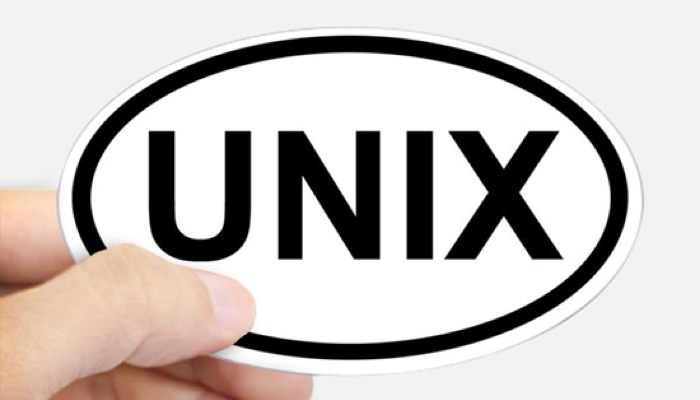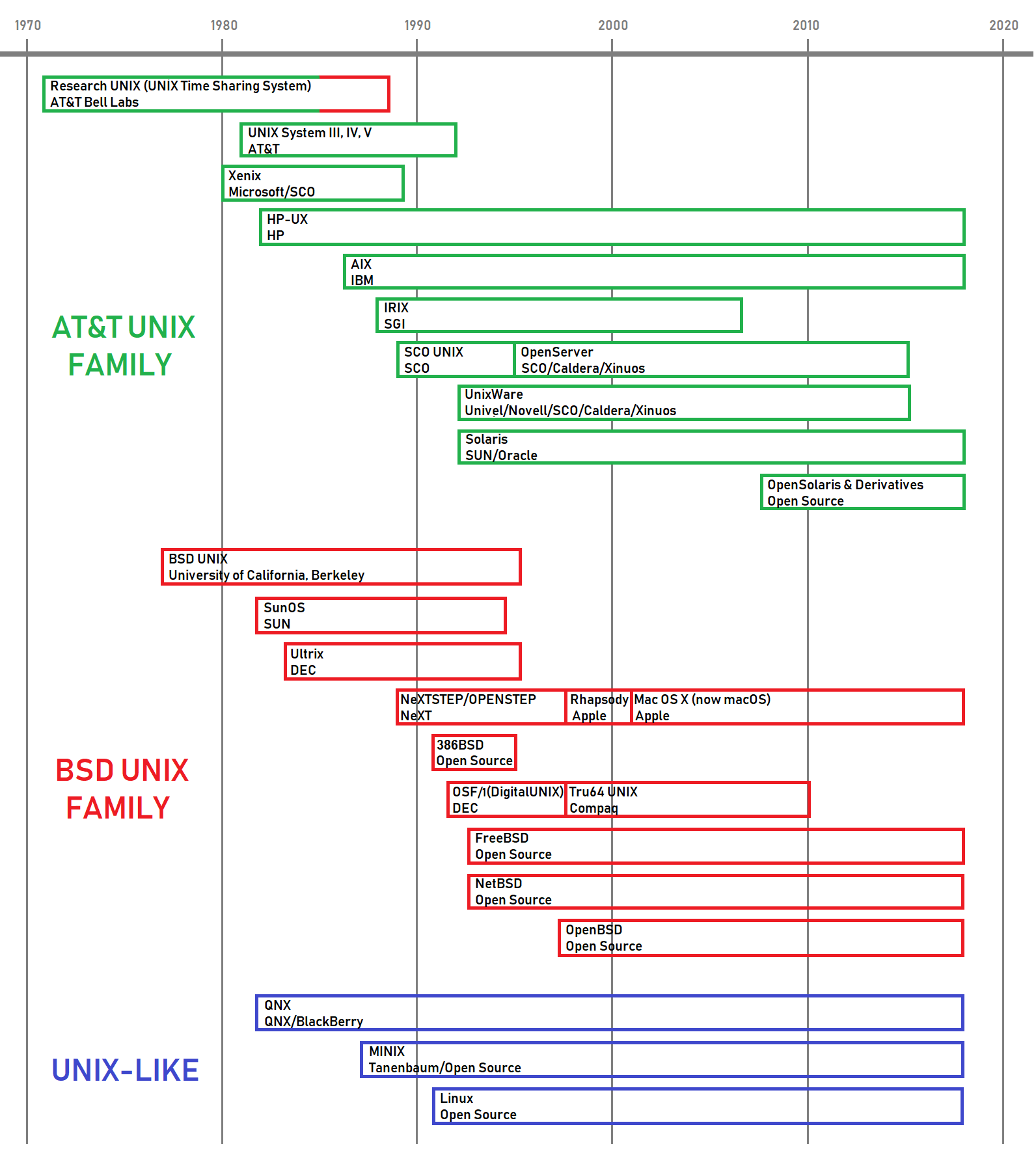Ultimate UNIX timeline

One thing that has always annoyed me about the Internet surrounds the history and evolution of UNIX-based operating systems. If you Google “UNIX timeline”, you’ll get a bunch of different results that are either incomplete, incorrect, complicated to the point where it’s unreadable, or a combination of all of these things.
So this blog post aims to rectify this!

Here are some important things to note about UNIX in general and each of the UNIX flavours depicted on this timeline:
-
Ken Thompson (of AT&T Bell Labs) started the development of UNIX back in 1969, but Version 1 wasn’t available until 1971. It was rewritten in Dennis Ritchie’s C programming language in 1973.
-
AT&T continued the development of this Research UNIX until 1989 (Version 10).
-
When UNIX was first released, AT&T had a monopoly and were prohibited from selling UNIX commercially, so they sold the source code for it to a number of companies that created their own commercial UNIX flavours (Xenix, HP-UX, AIX, IRIX, SCO UNIX, OpenServer, UnixWare, Solaris) - these flavours are referred to as the AT&T UNIX family
-
AT&T was eventually able to develop commercial UNIX software - this software was called System III, IV and V. Most commercial UNIX flavours were based on the AT&T System V code base.
-
The AT&T UNIX family has been in decline for the past two decades, and is rare today. Oracle recently stopped the development of Solaris in favor of Linux, and both HP-UX and AIX have only a niche market. OpenSolaris derivatives are still being developed, but the developer community is very small.
-
AT&T gave a copy of their UNIX source code to the University of California, Berkeley back in the mid-1970s, and they heavily modified it to create Berkeley Software Distribution (BSD) UNIX in 1977. AT&T based their Research UNIX on BSD UNIX starting with Version 8 (1985).
-
Because of its open nature, many other UNIX flavours were based off of the BSD code base, including SunOS, Ultrix, NeXTSTEP, OSF/1, 386BSD, FreeBSD, NetBSD and OpenBSD. These are collectively called the BSD UNIX family.
-
The NeXTSTEP and OSF/1 series of UNIX systems used a different UNIX kernel called Mach, which was considerably more complex than other UNIX kernels.
-
NeXTSTEP evolved into OPENSTEP before it was sold to Apple in 1997. Apple released OPENSTEP as Rhapsody (a short-lived product called Mac OS X Server), but continued to develop it into Mac OS X (now macOS). macOS continues to have a large market today (even Apple iOS is simply a scaled-down version of macOS).
-
386BSD quickly evolved into FreeBSD, NetBSD and OpenBSD, which are still actively developed today. FreeBSD is the most popular of these, and is commonly found in Web hosting and cloud environments.
-
UNIX had an incredibly strong presence in the computing space during the 1970s-1990s. As a result, several UNIX-like operating systems that were not based on the AT&T or BSD code base were developed that looked nearly identical to UNIX. These UNIX-like operating systems included QNX, MINIX and Linux.
-
Linux is the most successful UNIX-like operating system - the number of Linux systems today eclipses the combined number of UNIX operating systems today! In many respects, Linux is the future of UNIX. Even Android (the most common mobile operating system) is just a Linux operating system with the Android framework on top.